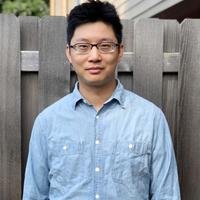Lie Theory
+
More about Lie theory
Lie theory is a branch of mathematics devoted to the study of symmetries that occur throughout mathematics and science.
For example the ancient classification of Platonic solids is seen nowadays as an instance of finding all ''finite symmetries`` in three-dimensional space. More recently the study of "continuous symmetries" of mathematical objects and structures known as Lie groups, introduced by Sophus Lie in the 1880's to study differential equations, has influenced many scientific disciplines.
One fundamental problem involves describing and classifying the structure and geometry of those symmetries and their various generalizations. Lie theory is also vital to number theory, differential equations, differential geometry, dynamical systems, and many other areas of mathematics and its applications.
Seminars
- Geometric methods in Langlands program seminar: Mondays from 4:30–6pm
- HAAR (Harmonic Analysis and Automorphic Representations) seminar: Mondays at 7pm
- Lie Theory Seminar
Faculty

Scot Adams
Professor
adams005@umn.edu
dynamical systems, foliations, ergodic theory, hyperbolic groups, trees, Riemannian geometry

Benjamin Brubaker
Professor
brubaker@umn.edu
automorphic forms, p-adic representations, combinatorial representation theory, statistical lattice models


Michelle Chu
Assistant Professor
mchu@umn.edu
hyperbolic geometry, low-dimensional topology, geometric group theory, and arithmetic groups

Paul Garrett
Professor
garrett@umn.edu
automorphic forms, L-functions, representations, harmonic analysis, number theory

Dihua Jiang
Professor
dhjiang@umn.edu
automorphic forms, L-functions, number theory, harmonic analysis, representation theory

William Messing
Professor Emeritus
messing@umn.edu
p-adic Galois representations associated with algebraic varieties via étale cohomology, the connections between the latter and de Rham cohomology

Peter Olver
Professor
olver@umn.edu
Lie groups, differential equations, computer vision, applied mathematics, differential geometry, mathematical physics
Photo: © 2007 John Stembridge